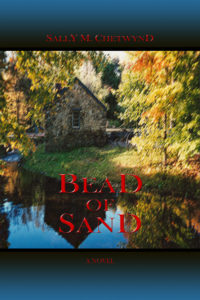 |
| William Strunk, Jr. |
One of the most dog-eared books in our household when I was a child was Strunk and White’s The Elements of Style. As my siblings and I progressed through our school-years, my mother consistently pushed this book in front of us as we sat down to our book reports and term papers. Some of us took the book to heart more than others, I more so, perhaps, than my four brothers.
It’s a little book, half the size of a sheet of paper, 71 pages. It stresses clarity, simplicity, and directness in writing. I would not be without it. To this day, whenever I find a copy at a yard sale, it goes home with me. I always can find a fellow writer who needs a copy. If I had to choose only three or four books from my writing resource library to take with me into exile, The Elements of Stylewould be one of them.
Its original author, William Strunk, Jr., was born on this day, July 1, 1869, the eldest child (of four surviving) of William and Ella Garretson Strunk, in Cincinnati, OH, where he spent his childhood. He earned a Bachelor’s Degree from University of Cincinnati in 1890, and a PhD at Cornell University in 1896. He furthered his education in 1898–99 at the Sorbonne and the Collège de France, where he studied morphology and philology.
Strunk spent a year teaching mathematics at Rose Polytechnical Institute in Terre Haute, IN, before joining the staff at Cornell, where he remained for 46 years. He taught English, finding a particular interest in classical and non-English literature. He began publishing in 1922 – works of analysis, critical essays, and compilations and critical editions of the works of James Fenimore Cooper, Dryden, and Shakespeare.
A favorite group among the literary at Cornell was The Manuscript Club. This informal, Saturday-night gathering of students and professors with a bent toward writing soon engaged Strunk. It was here that he met Elwyn Brooks White, a student whom he mentored, and whose name eventually became inextricably linked with Strunk: E. B. White.
 |
| My 1959 1st Printing of “Strunk & White” |
After some years in the classroom, Strunk realized that his students could benefit if he collected into one document the writing and grammar tips and techniques which he promoted in class. He did so, privately publishing The Elements of Style in 1918. Strunk used this guide in his classes thenceforth, and the students soon referred to it as “the little book.” Strunk teamed up with Edward A. Tenney in 1935 for a revised edition, named The Elements and Practice of Composition.
Strunk retired in 1937. He had married Olivia Emilie Locke in 1900, and they had three children, among them the noted musicologist Oliver Strunk. In 1945, he was diagnosed with a mental illness, and died the next year at the Hudson River Psychiatric Institute in Poughkeepsie, NY.
His legacy to literature, however, remained behind. E. B. White, whose passion for the written word had drawn him into journalism once out of college, did not forget the kindness and helpfulness of his mentor. Nor did he forget “the little book.” White praised Strunk’s guide in his New Yorkercolumn of July 27, 1957, for its dedication to “cleanliness, accuracy, and brevity in the use of English,” all in only 43 pages. Macmillan and Company noticed White’s review, and commissioned him to revise The Elements of Style for republication. White expanded and modernized the 1935 edition, which promptly sold over 2 million copies. Ultimately, between 1959 and 1999, over 10 million copies, in three editions, have sold.
“The little book,” also referred to as “Strunk & White,” has become something of a cult icon among wordsmiths. Debate over standard English grammar ebbs and flows, and always will, an inevitability with any living language. In his book Stylized: A Slightly Obsessive History of Strunk & White’s The Elements of Style, Mark Garvey, a self-professed Strunk & White enthusiast, posits:
“True believers have always felt something more, an extra dimension that has likely been a fundamental source of the book’s success all along: As practical as it is for helping writers over common hurdles, The Elements of Style also embodies a worldview, a philosophy that, for some, is as appealing as anything either author ever managed to get down on paper. Elements of Style is a credo. And it is a book of promises — the promise that creative freedom is enabled, not hindered, by putting your faith in a few helpful rules; the promise that careful, clear thinking and writing can occasionally touch truth; the promise of depth in simplicity and beauty in plainness; and the promise that by turning away from artifice and ornamentation you will find your true voice.”
In this day of “anything goes,” it is refreshing to me that there are still people out there who find that a few basic rules and principles promote or enhance, rather than hinder or stifle, understanding in communication.
Thank you, Mr. Strunk. Thank you, Mr. White. And thank you, Mr. Garvey.
SOURCES





